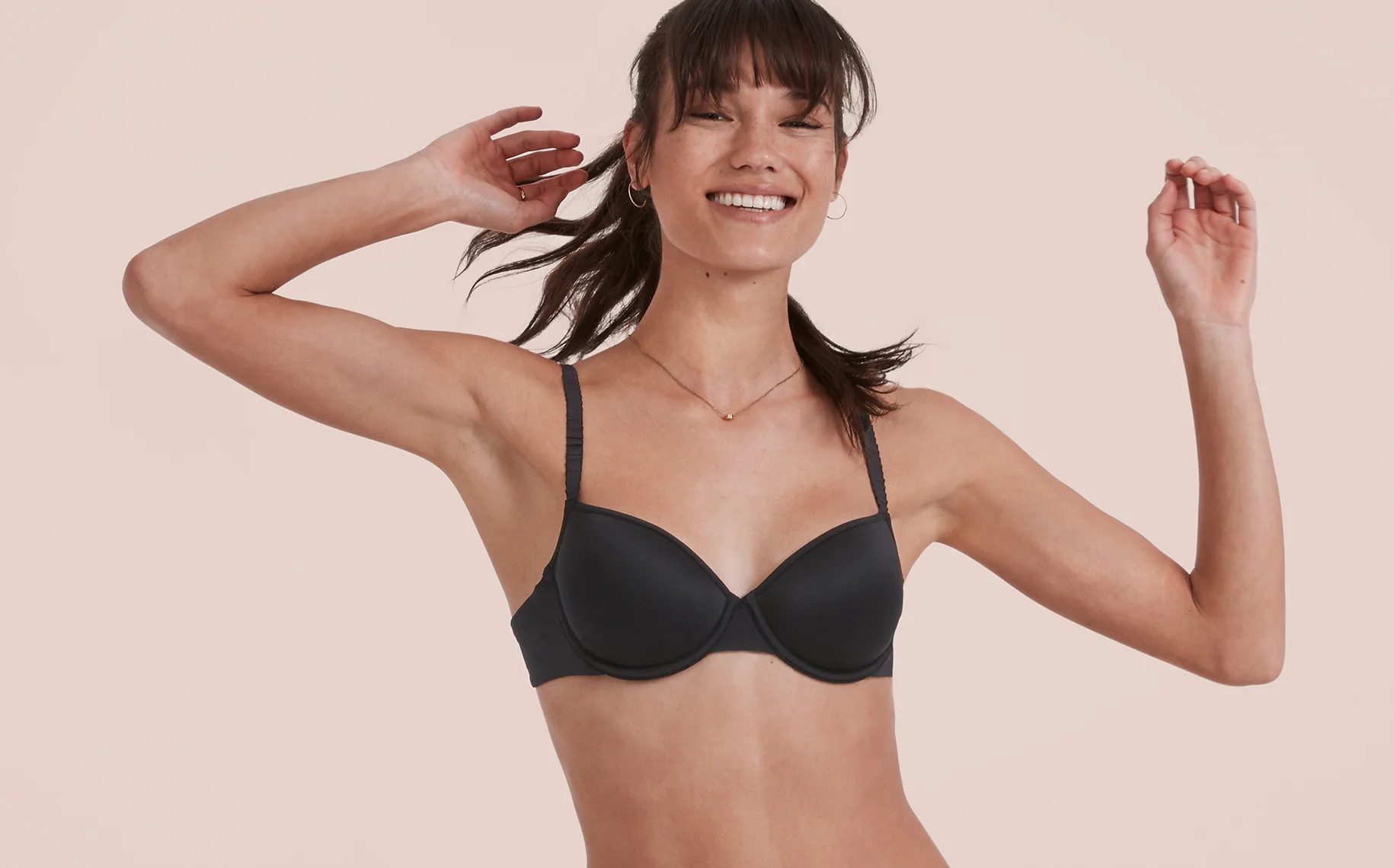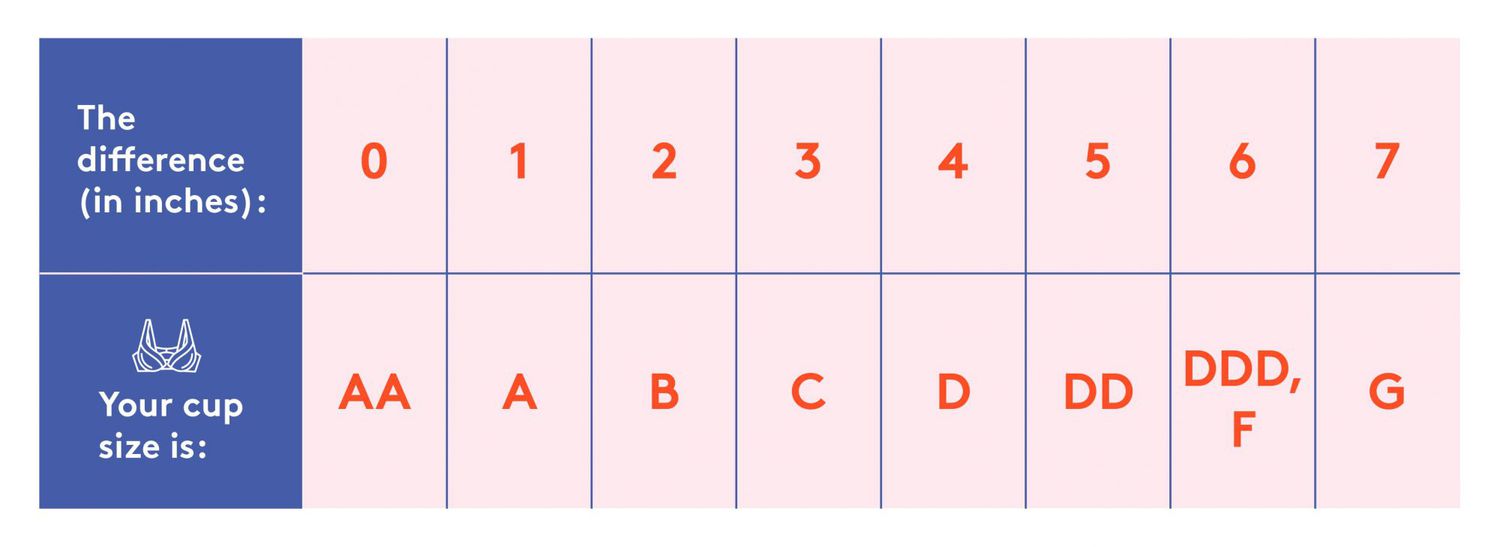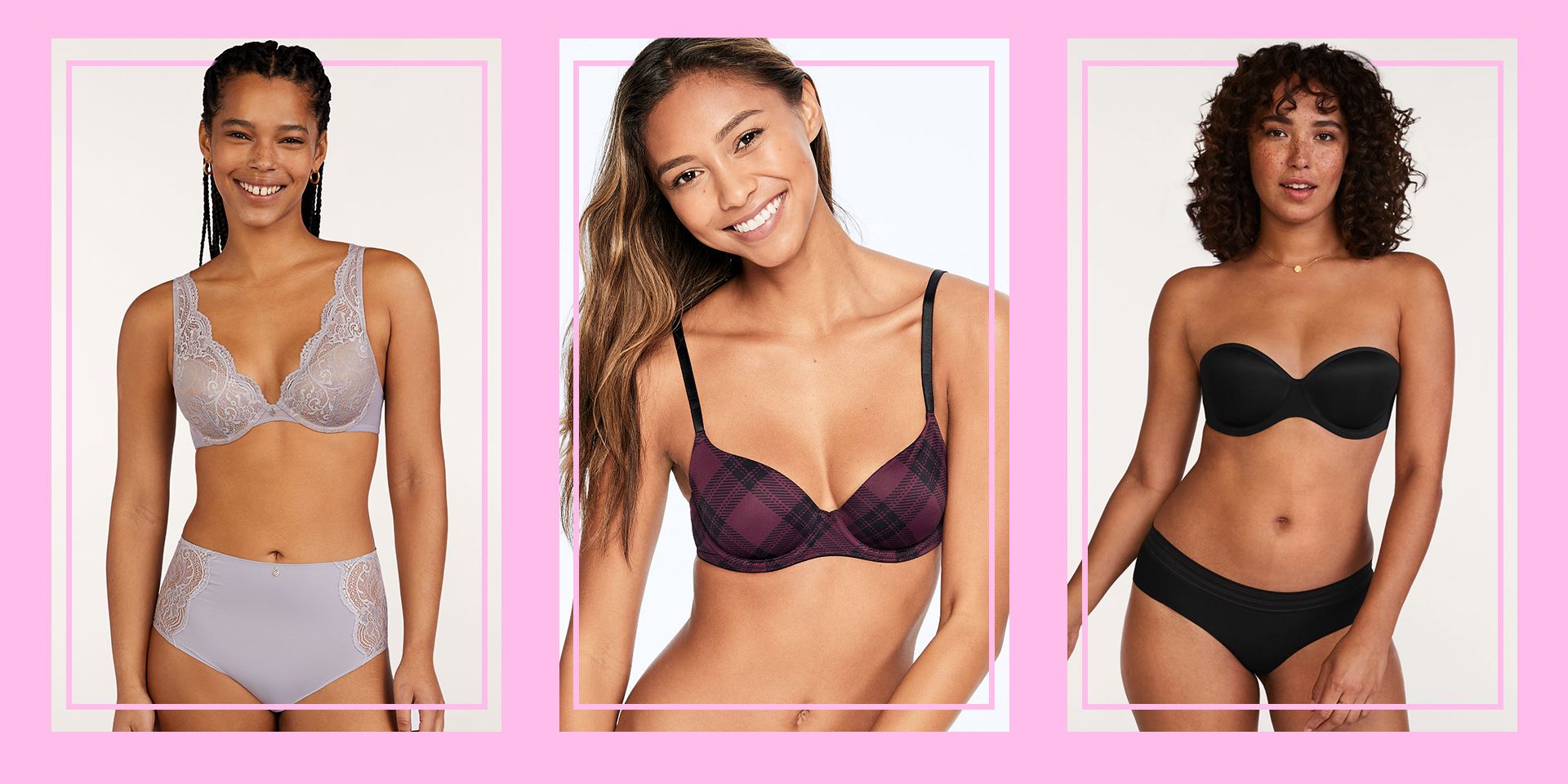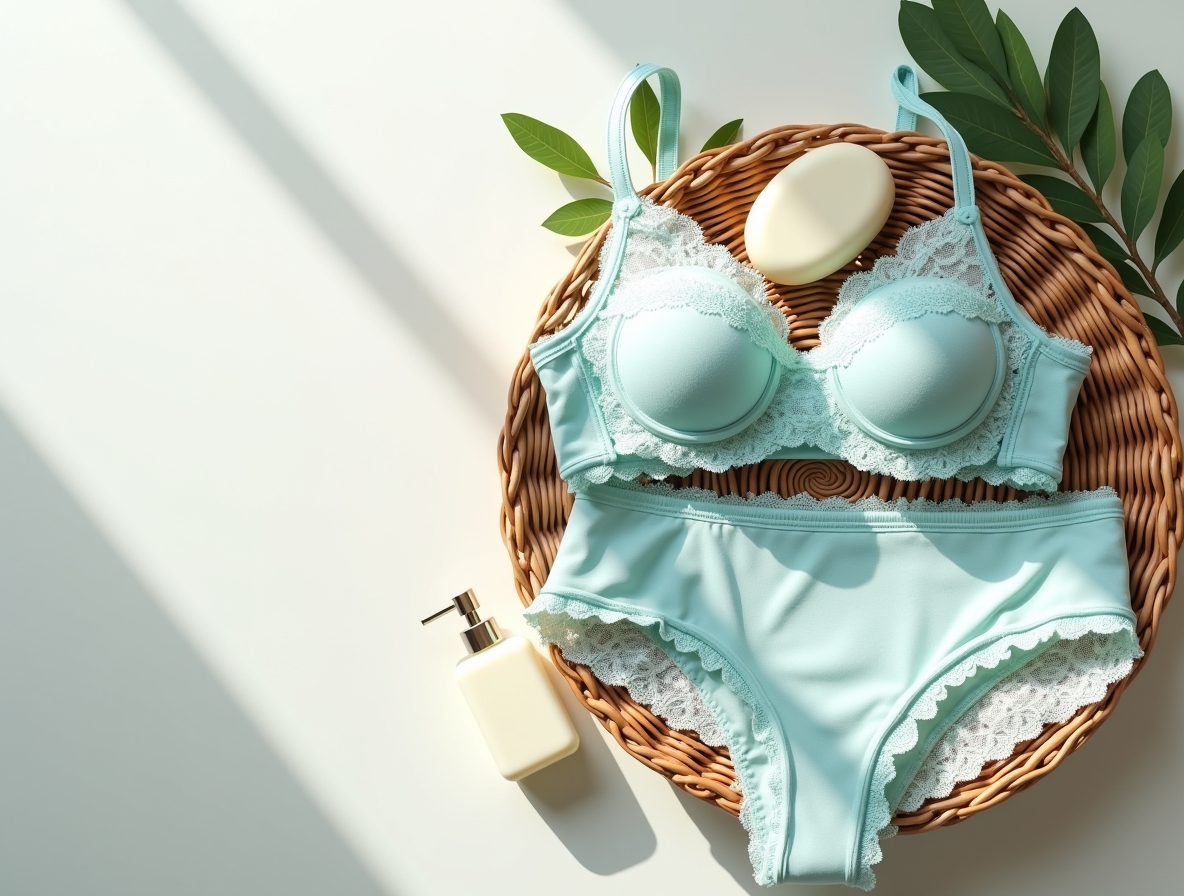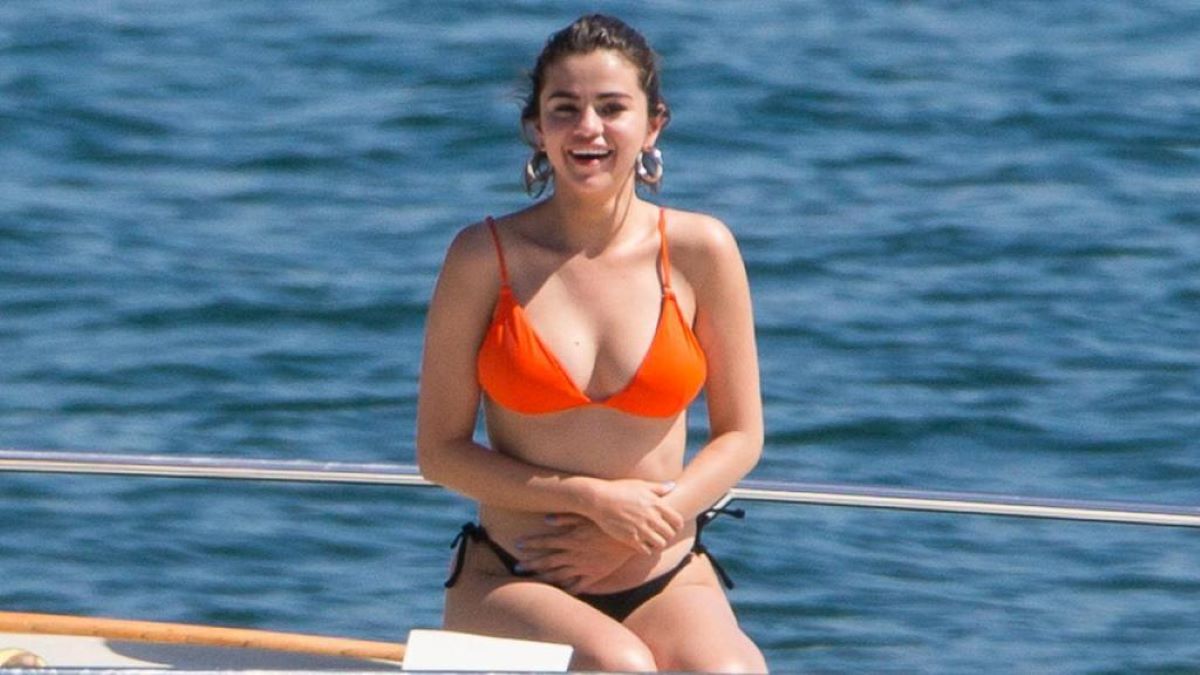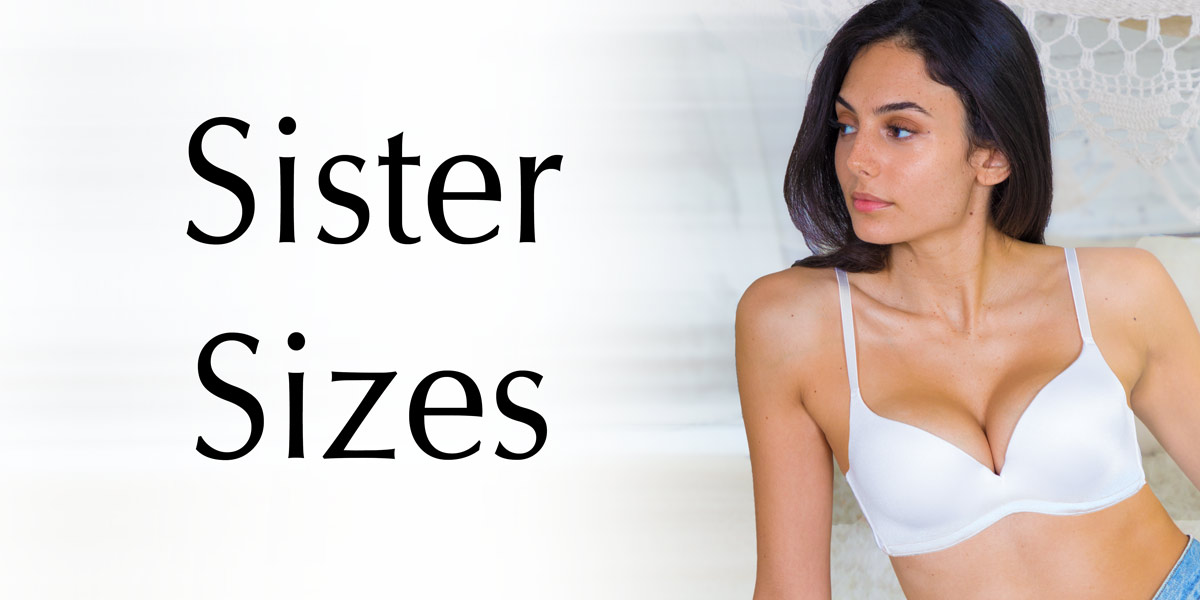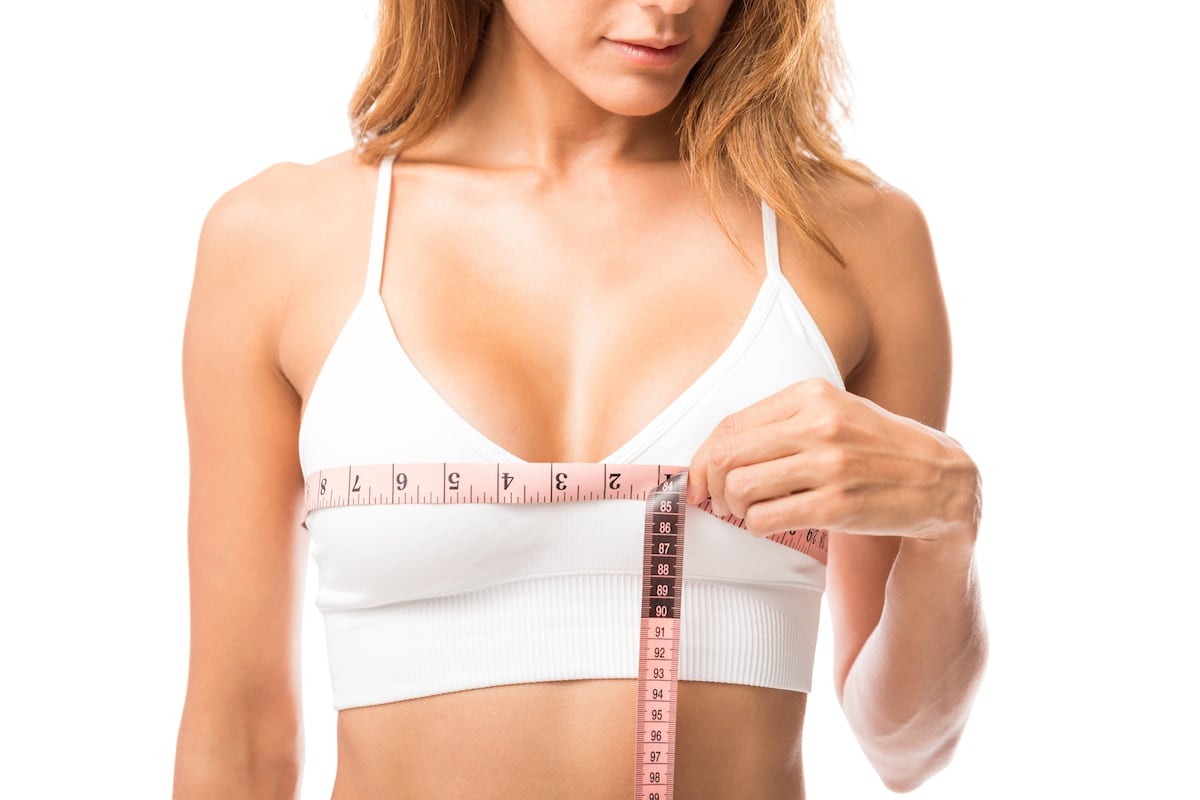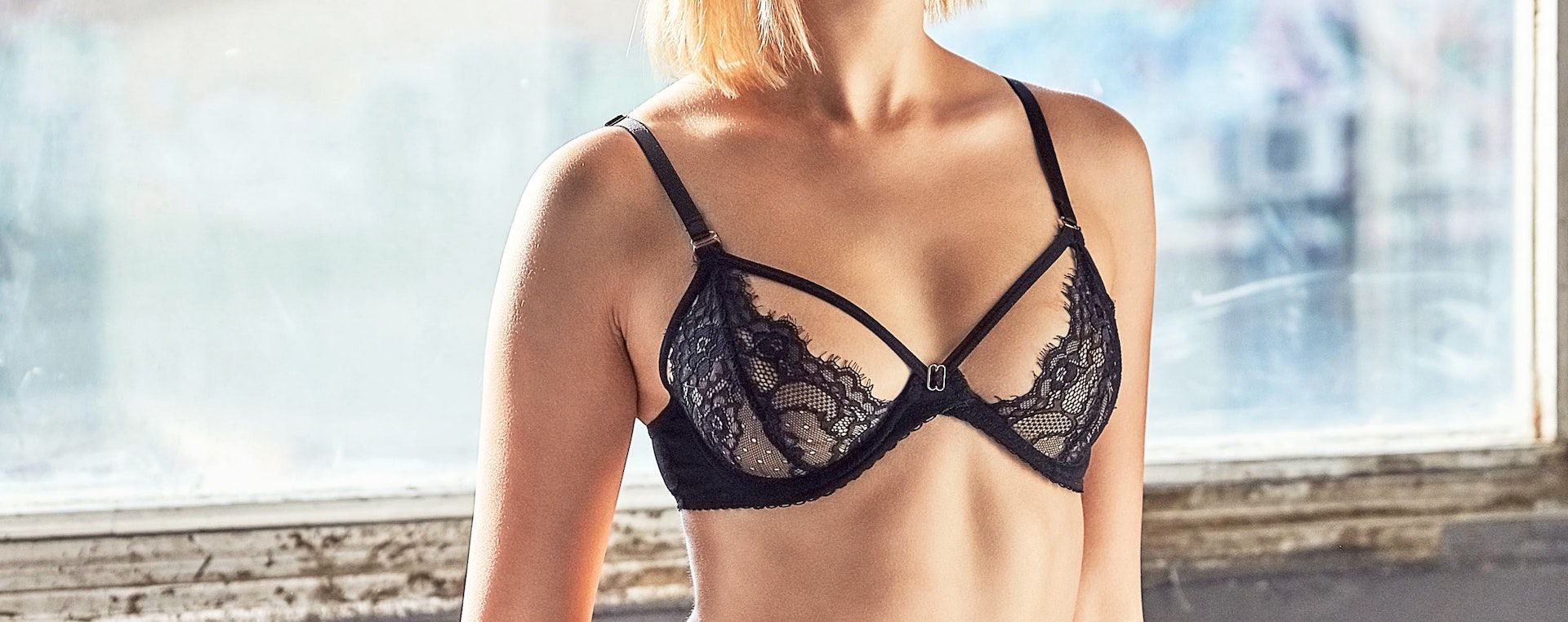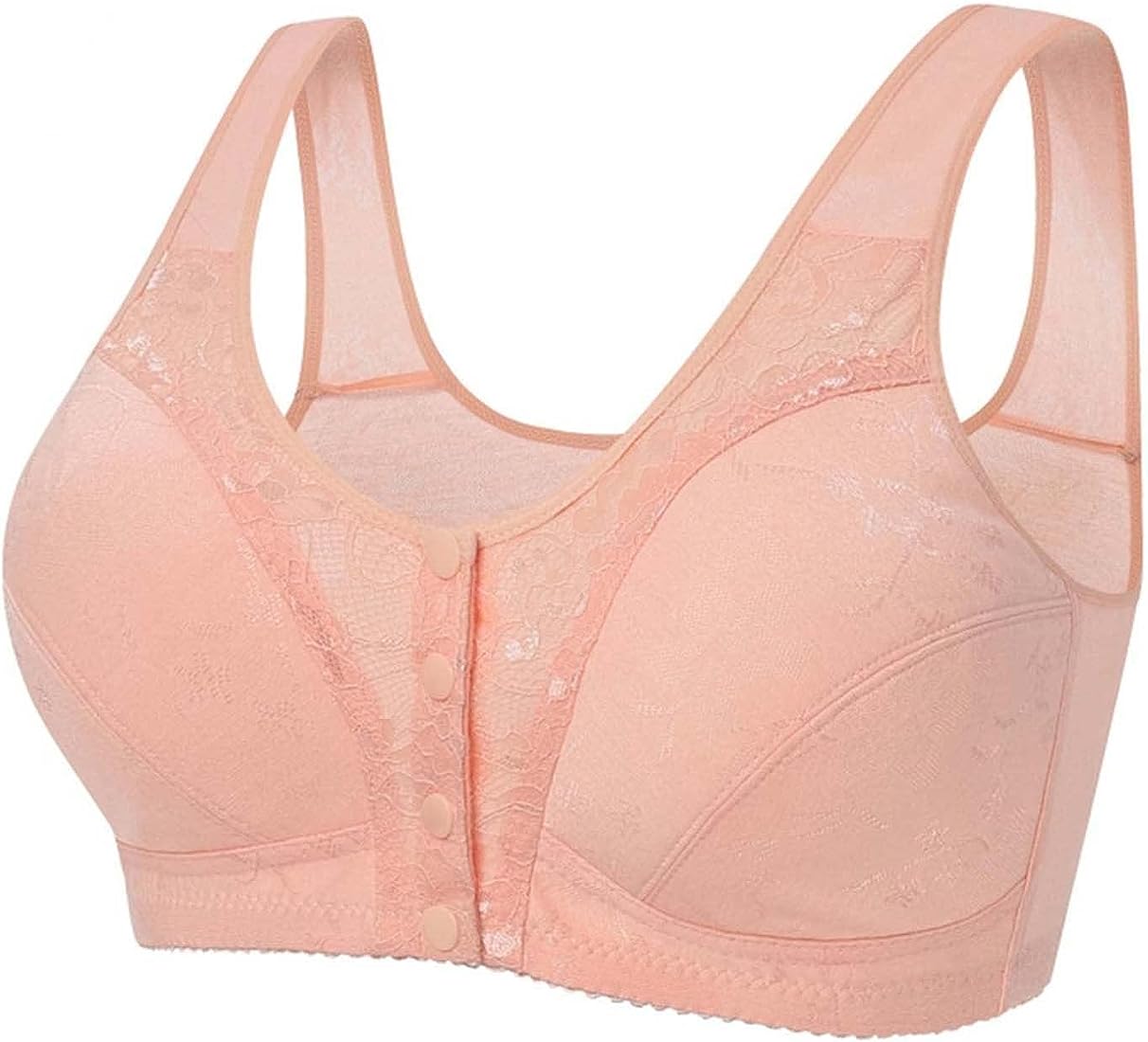Home>Women's Underwear>Bras>What Are The Bra Cup Sizes In Order
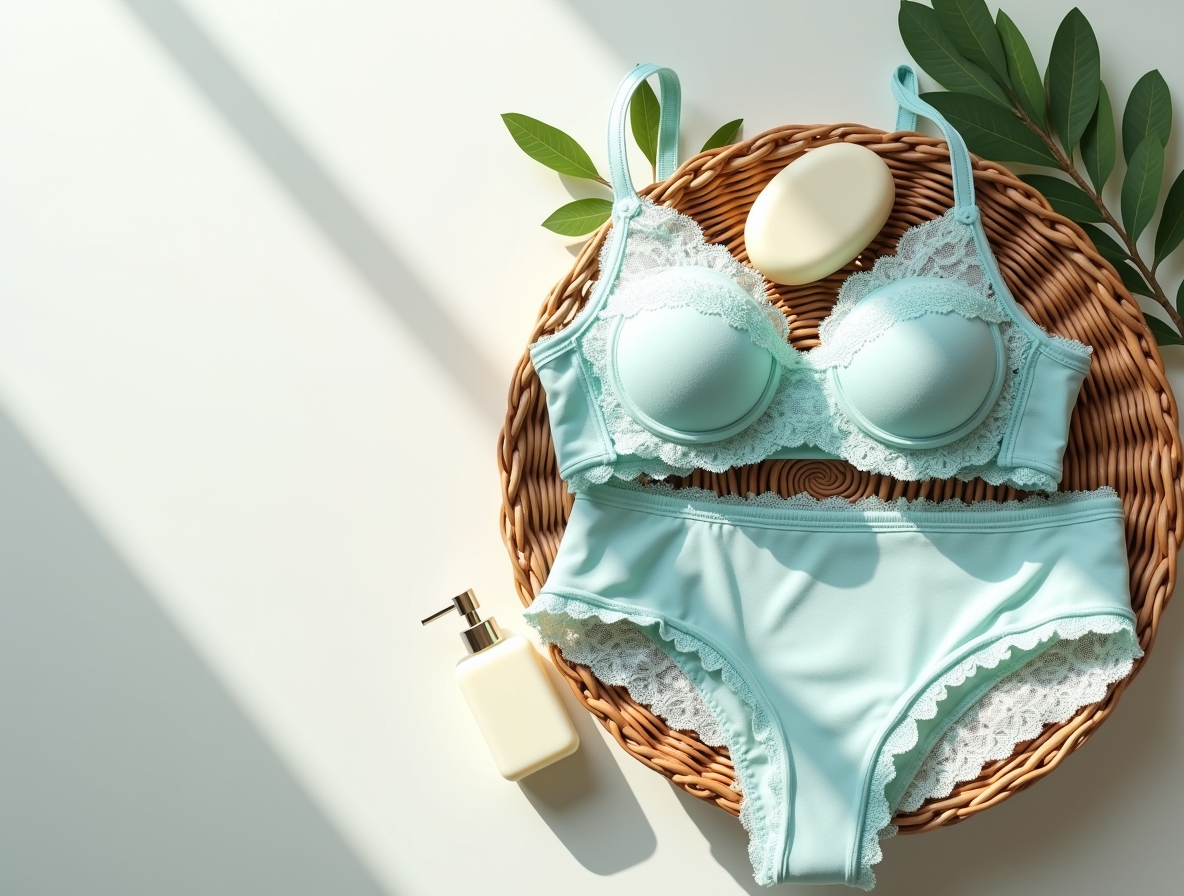

Bras
What Are The Bra Cup Sizes In Order
Modified: September 23, 2023
Discover the complete order of bra cup sizes and find the perfect fit. Learn all about different bra sizes and their measurements.
(Many of the links in this article redirect to a specific reviewed product. Your purchase of these products through affiliate links helps to generate commission for Under-tec.com, at no extra cost. Learn more)
Table of Contents
Introduction
When it comes to finding the perfect bra, there’s more to consider than just the band size. The cup size plays a crucial role in providing the right fit and support for your breasts. Understanding the different bra cup sizes in order is essential in ensuring that you choose a bra that not only fits well but also enhances your comfort and confidence.
For many people, shopping for bras can be overwhelming due to the sheer variety of options available. With an extensive range of cup sizes to choose from, it’s no wonder that finding the right fit can feel like a daunting task. However, having a solid understanding of the bra cup size system can demystify the process and make it easier to find the perfect bra for your body.
In this article, we will explore the different bra cup sizes in order, from the smallest to the largest, and provide insights into finding the right cup size for your body. Whether you have smaller breasts or a fuller bust, this guide will help you navigate the world of bra sizes and make informed choices.
A Brief Overview of Bra Cup Sizes
Bra cup sizes are represented by a combination of a letter and a number. The letter indicates the cup size, while the number represents the band size. The cup size determines the volume or fullness of the breasts, while the band size determines the circumference of the underbust area.
The cup size system typically starts with smaller cup sizes for those with smaller breasts and gradually increases in volume as the cup size letters progress. The most common cup sizes range from A to D, with A being the smallest and D being considered a more average size. However, cup sizes can go beyond D, with larger cup options available for those with bigger busts.
It’s important to note that cup sizes are not static and may vary depending on the band size. For example, a 34D bra and a 36C bra have the same cup volume, but the band size differs. This concept is known as sister sizing, which we will explore in more detail later in this article.
Additionally, cup sizes are not isolated measurements but are relative to the band size. For example, a B cup on a smaller band size will have a smaller volume than a B cup on a larger band size. Thus, understanding both the cup and band sizes is crucial in finding the right fit.
It’s essential to keep in mind that bra sizing can vary between different brands and styles. Therefore, it’s always advisable to try on bras to ensure the best fit and comfort. Knowing your approximate cup size is a great starting point, but it’s not a definitive measurement. The shape of your breasts, the elasticity of the bra fabric, and personal preference all play a role in finding the perfect fit.
Common Bra Cup Sizes in Order
Now let’s explore the common bra cup sizes in order, starting from the smallest to the largest:
- A cup: The A cup is the smallest cup size and is ideal for individuals with smaller breasts. It offers minimal coverage and is typically suited for those with an underbust measurement of around 31-33 inches.
- B cup: The B cup is slightly larger than the A cup and provides a bit more coverage. It’s a popular size for individuals with smaller to medium-sized breasts and an underbust measurement of approximately 32-34 inches.
- C cup: The C cup is considered a medium size and is a common choice for those with average-sized breasts. It offers more coverage and support compared to smaller cup sizes and is suitable for individuals with an underbust measurement of around 34-36 inches.
- D cup: The D cup is a fuller size and provides even more coverage and support for those with larger breasts. Individuals with an underbust measurement of about 36-38 inches typically find a comfortable fit in this cup size.
- DD cup: The DD cup, also known as an E cup, is one step larger than the D cup. It offers even more coverage and is ideal for individuals with a larger bust. Those with an underbust measurement of around 38-40 inches often find a great fit in this cup size.
It’s important to note that bra cup sizes can go beyond DD, with options such as DDD, G, H, and beyond available for those with even larger breasts. It’s always best to try on different sizes to find the most comfortable and supportive fit for your body.
Cup Sizes for Small Breasts
For individuals with smaller breasts, finding the right cup size is crucial to ensure proper fit, comfort, and support. Here are a few cup size options that are commonly recommended for those with smaller busts:
- A cup: The A cup is the smallest cup size and is suitable for individuals with a relatively smaller bust. It provides minimal coverage and is a popular choice for those with an underbust measurement of around 31-33 inches.
- AA cup: The AA cup is even smaller than the A cup and is ideal for individuals with an even more petite bust. This size is suitable for those with an underbust measurement of about 29-31 inches.
- AAA cup: The AAA cup is the smallest cup size available, designed for individuals with the most petite busts. It provides minimal coverage and is suitable for those with an underbust measurement of approximately 27-29 inches.
It’s important to remember that cup size is not the only factor to consider. The band size also plays a crucial role in achieving a proper fit. Women with smaller breasts often find that a smaller band size in combination with a smaller cup size provides the best fit.
When shopping for bras, it’s recommended to try on different sizes and styles to find the most comfortable and supportive option. Pay attention to how the bra sits on your chest, whether it provides enough coverage and support, and how snugly the band fits without digging into your skin.
Opting for padded or push-up bras can also enhance the appearance of smaller breasts and provide a slight lift. Additionally, bras with underwire can offer extra support and shape.
Remember, every individual is unique, and what works for one person may not work for another. It’s essential to find the style and size that makes you feel comfortable and confident in your own body.
Cup Sizes for Medium Breasts
For individuals with medium-sized breasts, finding the right cup size is key to achieving a comfortable and supportive fit. Here are a few common cup sizes that are often suitable for those with medium-sized busts:
- B cup: The B cup is slightly larger than the A cup and provides more coverage and support. It’s a popular size for individuals with medium-sized breasts and an underbust measurement of approximately 32-34 inches.
- C cup: The C cup is considered a medium size and offers even more coverage and support. It’s a common choice for those with an average-sized bust and an underbust measurement of around 34-36 inches.
- D cup: The D cup is a fuller size and provides ample coverage and support for those with larger breasts. Individuals with an underbust measurement of about 36-38 inches often find a comfortable fit in this cup size.
When it comes to medium-sized breasts, it’s important to focus on finding bras that offer the right balance of comfort, support, and aesthetic appeal. Look for bras with lightly padded or molded cups to provide a natural shape and enhance the appearance of your breasts.
Bra styles such as balconette or demi-cup bras, with their lower-cut cup design, can create a flattering neckline and lift for medium-sized busts. Additionally, bras with underwire support can offer added lift and shape.
Remember that cup size is not the only consideration. The band size also plays a crucial role in achieving a proper fit. Ensure that the band sits snugly around your ribcage without being too tight or loose. You should be able to fit two fingers under the band comfortably.
It’s also worth experimenting with different bra styles, such as push-up bras or plunge bras, to see which ones flatter your medium-sized bust the most. Ultimately, the goal is to find a bra that provides the perfect combination of comfort, support, and confidence.
Cup Sizes for Large Breasts
For individuals with larger breasts, finding the right cup size is essential for optimal comfort, support, and confidence. Here are a few common cup sizes that are often suitable for those with larger busts:
- D cup: The D cup is a popular size for those with larger breasts. It offers ample coverage and support for individuals with an underbust measurement of about 36-38 inches.
- DD cup: The DD cup, also known as an E cup, is one step larger than the D cup. It provides even more coverage and support, accommodating those with an underbust measurement of approximately 38-40 inches.
- DDD cup: The DDD cup, sometimes referred to as F cup, caters to individuals with larger busts and offers increased coverage and support. This cup size is suitable for those with an underbust measurement of about 40-42 inches.
- G cup: The G cup is another size for those with larger breasts. It provides generous coverage and support for individuals with an underbust measurement of approximately 42-44 inches.
When it comes to bras for large breasts, it’s vital to prioritize comfort and support. Look for bras with wide and adjustable straps to evenly distribute the weight of your breasts and prevent discomfort or strain on your shoulders.
Full cup or full coverage bras are ideal for larger breasts as they offer maximum coverage and support. These bras help lift and separate the breasts, reducing any potential spillage or bulging. Additionally, bras with underwire provide extra support and shape.
Consider opting for bras with multi-part cups or seamed cups, as they provide a more customized fit and better shaping for larger breasts. Look for bras with reinforced side panels or boning to prevent side spillage and ensure a secure and comfortable fit.
When trying on bras, pay attention to how the cups encapsulate your breasts. The cups should encase your breasts fully without any overflow or gaps. The center gore, the piece of fabric between the cups, should sit flat against your chest.
Remember that finding the right bra size is a journey of trial and error. Don’t hesitate to try different sizes, styles, and brands to find the best fit for your unique body and breast shape.
Cup Sizes for Extra Large Breasts
For individuals with extra-large breasts, finding the right cup size is crucial for optimal comfort, support, and confidence. Here are a few common cup sizes that are often suitable for those with bigger busts:
- DDD cup: The DDD cup, sometimes referred to as an F cup, is a popular choice for individuals with extra-large breasts. It provides ample coverage and support for those with an underbust measurement of about 40-42 inches.
- G cup: The G cup offers even more coverage and support for those with larger breasts. It accommodates individuals with an underbust measurement of approximately 42-44 inches, providing a comfortable and secure fit.
- H cup: The H cup is a size that caters to those with exceptionally large breasts. It provides generous coverage and support for individuals with an underbust measurement of around 44-46 inches.
- I cup: The I cup is another size available for individuals with extremely large breasts. It offers extensive coverage, accommodating those with an underbust measurement of approximately 46-48 inches.
When it comes to bras for extra-large breasts, comfort and support are of utmost importance. Look for bras with wider and cushioned straps to distribute the weight of your breasts evenly, reducing strain on your shoulders.
Full coverage or full cup bras are ideal for larger breasts as they offer maximum coverage and support. Seek out bras with multi-part cups or seamed cups to provide a more customized fit and better shaping for your breasts. Bras with underwire also offer extra support and lift for larger busts.
Consider choosing bras with additional features such as side panels or boning to prevent side spillage and provide a secure and comfortable fit. Wide bands under the bust can help provide added support and stability.
It’s crucial to pay attention to the fit of the cups when trying on bras. The cups should fully encapsulate your breasts without any spillage or gaps. The center gore, the piece of fabric between the cups, should sit flat against your chest for optimal support.
Remember that finding the perfect bra size for your extra-large breasts might require experimentation with different sizes, styles, and brands. Don’t be afraid to try on a variety of options to discover the most comfortable and supportive fit for your unique body and breast shape.
How to Determine Your Bra Cup Size
Properly determining your bra cup size is essential to ensure a comfortable and supportive fit. Follow these steps to find your correct cup size:
- Measure your band size: Start by wrapping a measuring tape around your ribcage, just beneath your breasts. Ensure that the tape is snug but not too tight. Take note of this measurement in inches.
- Measure your bust size: Next, measure around the fullest part of your bust, making sure the tape is parallel to the ground. Record this measurement in inches as well.
- Calculate the difference: Subtract your band size measurement from your bust size measurement. The difference between these two measurements will help determine your cup size.
- Use a bra size chart: Refer to a bra size chart or calculator to determine your cup size based on the difference between your band and bust measurements. Each inch of difference corresponds to a different cup size.
- Try on different sizes: Keep in mind that sizing can vary between brands and styles, so it’s important to try on different sizes to find the best fit for your body. Look for bras that offer both comfort and support.
It’s essential to remember that bra sizing is not an exact science, and it may require some trial and error to find your perfect fit. Factors such as breast shape, elasticity of the bra fabric, and personal preference also play a role in determining the ideal cup size.
If possible, it’s recommended to get fitted by a professional bra fitter. They have experience in measuring and can provide valuable insights into finding the right cup size and bra style for your body. A professional fitting can help take the guesswork out of bra shopping and ensure a more accurate fit.
Keep in mind that bra sizing can change over time due to factors such as weight fluctuations, hormonal changes, or pregnancy. It’s important to reevaluate your bra size periodically to ensure ongoing comfort and support.
Remember, the right bra should not only provide support but also make you feel comfortable, confident, and empowered. Don’t be afraid to experiment with different sizes and styles until you find the perfect fit for your unique body and breast shape.
Understanding Sister Sizes
When it comes to bra sizing, it’s important to understand the concept of sister sizes. Sister sizes are bra sizes that have the same cup volume but differ in band size. Knowing your sister sizes can be beneficial when shopping for bras, especially if you find that your usual band size is not providing the desired fit.
Sister sizes allow you to adjust the band size while maintaining the same cup volume. For instance, if you find that a 34C bra feels too tight in the band but the cups fit well, you can try a sister size of 36B. The band size is larger, but the cup volume remains the same.
Here are a few examples of sister sizes:
- To go up a band size while keeping the same cup volume, you can choose a sister size with a lower cup letter. For example, if your usual bra size is 34D and you want a looser band, you can try a 36C. The cup volume remains the same, but the band size is increased.
- To go down a band size while keeping the same cup volume, you can choose a sister size with a higher cup letter. For instance, if your usual bra size is 36B and you want a tighter band, you can try a 34C. Again, the cup volume remains consistent, but the band size is decreased.
- If you need to go both up and down a band size, consider adjusting the cup size accordingly. For example, if your typical bra size is 34C but you find the band too tight and want to try a 36D, you can try a sister size of 36C. This allows you to increase the band size while adjusting the cup size to maintain the same volume.
Remember that sister sizes serve as a useful guideline, but every individual’s body shape and proportions are unique. It’s important to try on bras in different sizes to determine the best fit for your specific needs.
Keep in mind that while sister sizes can provide options for adjusting the band size, they might not always be a perfect substitute for your true bra size. Factors such as the style, fabric, and brand can also affect the fit of a bra. Therefore, it’s always recommended to try on different sizes and styles to find the most comfortable and supportive fit for your body.
Conclusion
Understanding bra cup sizes and finding the right fit is crucial for both comfort and confidence. Whether you have small, medium, large, or extra-large breasts, knowing the range of cup sizes available and how to determine your own size empowers you to make informed choices when shopping for bras.
Remember that cup sizes are just one piece of the puzzle; the band size, breast shape, and personal preference also come into play when finding the perfect fit. It’s essential to try on different sizes, styles, and brands to find the bras that not only provide the right support but also make you feel comfortable and confident.
Additionally, understanding sister sizes can open up more options for adjusting the band size while maintaining the same cup volume. This knowledge allows you to explore different sizes to find the most comfortable fit for your unique body.
Keep in mind that bra sizing can vary between brands and styles, so don’t be discouraged if you need to try on multiple sizes before finding the perfect fit. Remember, wearing a bra that supports and fits well can enhance your overall comfort, posture, and self-esteem.
Lastly, don’t hesitate to seek the assistance of a professional bra fitter if you’re uncertain about your size or have specific concerns. They can provide valuable guidance and ensure you find bras that cater to your individual needs.
By understanding the different bra cup sizes in order and following the steps to determine your size, you can confidently navigate the world of bras and enjoy the benefits of a well-fitting and supportive undergarment.
